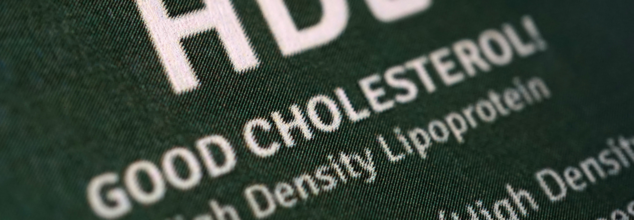
Can Too Much Good Cholesterol Be Bad For Your Eyes?
There have been a lot of misunderstandings about different components of our body and what foods, albeit natural, we should avoid because of what they contain. Many people believed that because foods like avocado have fats, they are unhealthy and should not be consumed. But in recent years people have had more conversations and educated themselves about the difference between healthy fats that foods contain and saturated fats which should be avoided. The same goes for cholesterol, where people didn’t know HDL or ‘good’ cholesterol is necessary for your body unlike LDL or ‘bad’ cholesterol. There have been a lot of conversations and research regarding the same, and a new research has reminded us that too much of anything can be bad! A recent study published in the British Journal of Ophthalmology suggests a surprising link between high levels of "good" HDL cholesterol and an increased risk of glaucoma, an eye condition that can lead to vision loss and blindness. This contradicts previous assumptions and raises questions about the complex relationship between cholesterol and eye health.
What Did The Study Found?
Researchers looked at information from a lot of people in the UK. They checked their cholesterol levels and then followed them for many years to see who developed glaucoma. They found that people with the highest levels of "good" HDL cholesterol were more likely to get glaucoma. Even more surprising, people with higher levels of "bad" cholesterol (LDL) and other fats were less likely to get it. This was mostly seen in people older than 55.
Doctors and other experts are being careful about what this study means. They say we need more research to be sure. One doctor said that the way glaucoma was defined in the study wasn't perfect, and that using just one cholesterol test might not be accurate. Another doctor was surprised by the results and thinks there might be other things affecting the connection between cholesterol and glaucoma. They both agree that we need more studies to really understand what's going on.
What Is Glaucoma?
Glaucoma is a serious eye problem that damages the nerve that connects your eye to your brain. It can cause blindness. It's often called "the silent thief of sight" because you usually don't notice any problems until it's too late. We know that things like your age, family history, and other health problems can increase your risk of glaucoma. This new study suggests that cholesterol might also play a role, but we need more research to be sure. It's important to get your eyes checked regularly so doctors can catch glaucoma early.
Early Signs Of Glaucoma
Glaucoma, a group of eye diseases that damage the optic nerve, can silently steal your sight. Because symptoms often don't appear until the later stages, understanding the different types of glaucoma and their associated signs is crucial for early detection and treatment.
Open-Angle Glaucoma
This type often shows no signs in its early stages. Over time, you might notice patchy blind spots in your peripheral (side) vision. As it progresses, you may have trouble seeing things directly in front of you (central vision).
Acute Angle-Closure Glaucoma
This is a more sudden and noticeable form. Symptoms include a severe headache, intense eye pain, nausea or vomiting, blurry vision, seeing halos or colored rings around lights, and redness in the eye.
Normal-Tension Glaucoma
Like open-angle glaucoma, this type often has no early symptoms. Vision gradually becomes blurry, and eventually, side vision is lost.
Childhood Glaucoma
In babies, signs can include a dull or cloudy eye, increased blinking, and tearing without crying. Older children might experience blurry vision, worsening nearsightedness, headaches, and other symptoms.
Pigmentary Glaucoma
This type can cause halos around lights, blurry vision that worsens with exercise, and a gradual loss of side vision.
© 2024 Bennett, Coleman & Company Limited

